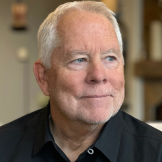Transforming overwhelm into strategic focus is not theory for me — it’s lived reality. Years commanding emergency response teams through life changing events like Hurricane Katrina and 9/11 forced a kind of clarity very few will ever experience; chaos meant something immediate and dangerous, and clarity was not a luxury, but a lifeline.
The boardroom, for many executives, can be its own hurricane. Overwhelm seldom arrives in sirens and floodwater, but simmers through endless obligations, crushing deadlines, and a gnawing fear of failure. I have seen accomplished, technically gifted leaders paralyzed not by competency, but by the silent script of self-doubt, a condition I battled myself leading teams where the consequences were measured in lives, not quarterly profits.
As a lesson in reframing leadership identity, what moved me, and those I advised, going from chaos toward clarity was a shift in understanding, that leadership was not an external technique, but an internal alignment. Our first priority was not dressing up management skills but pursuing a comprehensive mental reorientation. The pressure executives feel often emerges from beliefs that predate their roles, influenced by moments of extreme crisis or by narratives written in rooms far from the disaster zone.
We design tools to expose these subconscious influences and build objective measures of competency, anchoring leaders in facts, not fears. Competency assessments provided the counterweight to perceived inadequacy. Then, we developed frameworks for emotional management, teaching executives how to intercept those self-defeating internal messages that ignite anxiety, just as I had learned to block out the static of panic in the midst of a disaster.
Authenticity has become my most strategic asset. Real, lasting transformation isn’t about trading panic for productivity but about connecting with authentic self-expression. Crisis taught me that you cannot perform under pressure through willpower alone; true leadership stems from operating out of values rather than merely reacting. In the aftermath of 9/11 and Hurricane Katrina, as well as while leading organizations through financial chaos, I found clarity only by returning to the fundamentals of understanding who I am and what truly matters when everything is at stake.
The leaders I advise begin to flourish not because the chaos disappeared, but because their internal compass actually became visible. They learned to observe themselves, interrupt reactive scripts, and focus deliberately on what mattered—moving from unhealthy cycles of overwhelm into sustainable, intentional leadership. They built boundaries that respected their limits and created space for strategic thought, not just transactional motion.
This is about building resilience beyond crisis. The executive journey mirrors my experience in crisis response. The tools matter, but character under pressure makes the real difference. In high-stakes moments, whether facing down floodwaters or boardroom fallout, what clients remember is not technical proficiency, but the steadiness of someone anchored in conviction. The organizations that thrive are not those with the slickest playbooks and processes, but those whose leaders embody trust and authenticity, especially when the unexpected hits.
Leadership is not what you do, but who you are when tested. The path from chaos to clarity starts from the inside, transforming overwhelm into strategic focus through values, identity, and disciplined emotional management. In my career, this journey proved the foundation for enduring resilience, whether on the front lines of disaster or at the helm of transformative leadership.



